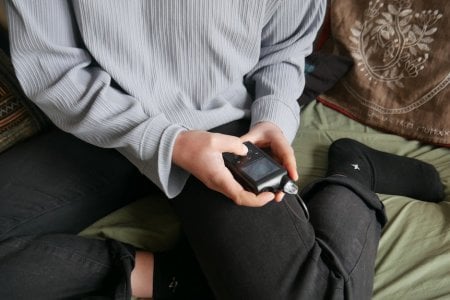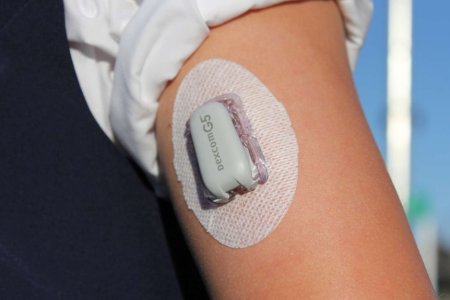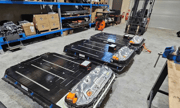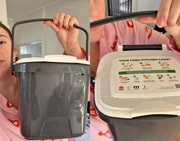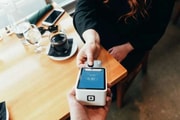Renewed calls to subsidise insulin pumps and glucose monitors for diabetics
By
ABC News
- Replies 0
Sammy Haigh's day starts with a series of complex calculations.
"I get out of bed and work out how many grams of carbs I'm going to be eating for breakfast, then I put those carbs into my insulin pump, which will deliver my insulin to me," she said.
The 26-year-old Newcastle woman is one of 2 million Australians living with diabetes.
Over the course of a year, the minimum spend on diabetes supplies sets her back almost $5,000, and that's minus the subsidies she receives from Medicare and Australia's National Diabetes Services Scheme (NDSS).
Last year, a parliamentary inquiry into diabetes recommended the federal government make insulin pumps available at a low cost for all people with type 1 diabetes.
The report was released 12 months ago, and the government has yet to respond to the recommendations.
It has left people, like Ms Haigh, to deal with the financial burden of the lifelong, incurable autoimmune condition.
"My diabetes is more than half of my rent,” she said.
"It totals, at the moment, between $400 to $500 a month."
This includes costs for private health insurance, which she needs in order to access an insulin pump, other diabetes technologies, and various doctors' appointments.
"These expenses are not just one-offs, but for critical equipment necessary to stay alive," she said.
"It's on top of an already tight young-person budget, having to juggle increasingly higher rent costs, groceries, and fuel.
"It can be really hard, having to choose between my health and putting money aside for saving for my long-term financial security or doing something fun with my friends."
Ms Haigh has just started using an insulin pump, a small digital device that delivers insulin continuously to manage blood glucose levels.
Insulin pumps are only subsidised for type 1 patients under the age of 21.
"The cost of a pump is absolutely unaffordable for some people," she said.
Ms Haigh's insulin pump works in tandem with her continuous glucose monitor (CGM), which is government subsidised.
It connects to her phone and is able to show her blood glucose levels in real time.
Professor David Simmons, an endocrinologist and Diabetes Australia's chief medical officer, said increasing access to insulin pumps could reduce costs for the health system, as keeping blood glucose levels stable reduces the risk of long-term health complications.
"It does reduce the cost [for the health system] by reducing people who end up in intensive care units or on dialysis, for example," he said.
He said Australia was lagging behind the rest of the world.
"This is now seen as normal care, but sadly in Australia it's not being provided in the way that is happening in other countries."
Multiple countries, including the United Kingdom and Canada, subsidise insulin pumps for people with type 1 diabetes.
Hunter Valley man Pete Holland was diagnosed with type 2 diabetes 10 years ago.
After seeing the benefits of a CGM for his daughter with type 1 diabetes, he tried it himself.
Despite describing the device as a "game-changer" for managing his condition, he stopped using it due to the cost.
"They're a massive expense, they're over $200 a month to be able to use these things," he said.
"With the cost of living these days, I can't afford to be paying that sort of stuff."
Mr Holland said he was desperately waiting for CGM subsidies to increase.
"It's a no-brainer for me to take a load off the health system and help anybody with diabetes at the same time," he said.
In a statement, a spokesperson for Federal Health Minister Mark Butler said the government was carefully considering the report of the diabetes inquiry.
"The report shines a light on a serious public health issue affecting every community in Australia," the statement said.
Written by Courtney Yeandle and Fleur Connick, ABC News.
"I get out of bed and work out how many grams of carbs I'm going to be eating for breakfast, then I put those carbs into my insulin pump, which will deliver my insulin to me," she said.
The 26-year-old Newcastle woman is one of 2 million Australians living with diabetes.
Over the course of a year, the minimum spend on diabetes supplies sets her back almost $5,000, and that's minus the subsidies she receives from Medicare and Australia's National Diabetes Services Scheme (NDSS).
Last year, a parliamentary inquiry into diabetes recommended the federal government make insulin pumps available at a low cost for all people with type 1 diabetes.
The report was released 12 months ago, and the government has yet to respond to the recommendations.
It has left people, like Ms Haigh, to deal with the financial burden of the lifelong, incurable autoimmune condition.
Cost burden
Ms Haigh is an early childhood educator and says diabetes costs her roughly $103 per week."My diabetes is more than half of my rent,” she said.
"It totals, at the moment, between $400 to $500 a month."
This includes costs for private health insurance, which she needs in order to access an insulin pump, other diabetes technologies, and various doctors' appointments.
"These expenses are not just one-offs, but for critical equipment necessary to stay alive," she said.
"It's on top of an already tight young-person budget, having to juggle increasingly higher rent costs, groceries, and fuel.
"It can be really hard, having to choose between my health and putting money aside for saving for my long-term financial security or doing something fun with my friends."
Ms Haigh has just started using an insulin pump, a small digital device that delivers insulin continuously to manage blood glucose levels.
Insulin pumps are only subsidised for type 1 patients under the age of 21.
"The cost of a pump is absolutely unaffordable for some people," she said.
Ms Haigh's insulin pump works in tandem with her continuous glucose monitor (CGM), which is government subsidised.
It connects to her phone and is able to show her blood glucose levels in real time.
'Crisis point'
Diabetes Australia said the diabetes epidemic was at a crisis point, estimating the disease cost the health system $9.1 billion each year.Professor David Simmons, an endocrinologist and Diabetes Australia's chief medical officer, said increasing access to insulin pumps could reduce costs for the health system, as keeping blood glucose levels stable reduces the risk of long-term health complications.
"It does reduce the cost [for the health system] by reducing people who end up in intensive care units or on dialysis, for example," he said.
He said Australia was lagging behind the rest of the world.
"This is now seen as normal care, but sadly in Australia it's not being provided in the way that is happening in other countries."
Multiple countries, including the United Kingdom and Canada, subsidise insulin pumps for people with type 1 diabetes.
'Inequitable access'
One recommendation of the 2023 inquiry was that continuous glucose monitor (CGM) access be expanded to type 2 diabetes patients, who are not covered by the government subsidies.Hunter Valley man Pete Holland was diagnosed with type 2 diabetes 10 years ago.
After seeing the benefits of a CGM for his daughter with type 1 diabetes, he tried it himself.
Despite describing the device as a "game-changer" for managing his condition, he stopped using it due to the cost.
"They're a massive expense, they're over $200 a month to be able to use these things," he said.
"With the cost of living these days, I can't afford to be paying that sort of stuff."
Mr Holland said he was desperately waiting for CGM subsidies to increase.
"It's a no-brainer for me to take a load off the health system and help anybody with diabetes at the same time," he said.
In a statement, a spokesperson for Federal Health Minister Mark Butler said the government was carefully considering the report of the diabetes inquiry.
"The report shines a light on a serious public health issue affecting every community in Australia," the statement said.
Written by Courtney Yeandle and Fleur Connick, ABC News.

